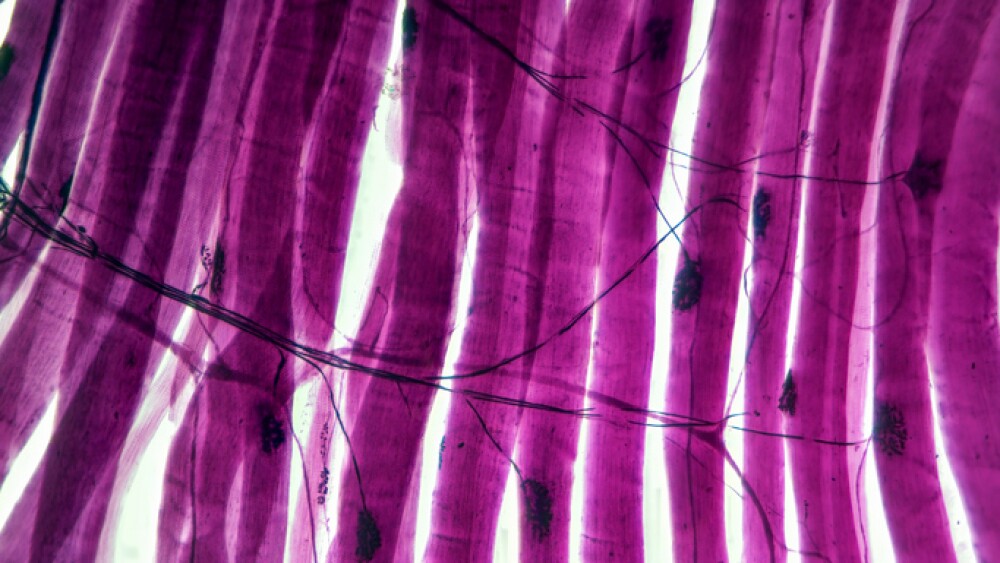Kodiak Sciences Inc. announced that nine scientific presentations on its clinical and research pipeline programs will be made at the Association for Research in Vision and Ophthalmology 2024 Annual Meeting, being held from May 5 – 9 in Seattle, Washington.
- Tarcocimab clinical and non-clinical data highlight strong 6-month efficacy profile in diabetic retinopathy patients and continued favorable safety profile.
- KSI-501 clinical and non-clinical data highlight multiple ascending dose safety, bioactivity and durability in treatment-naïve and treatment-experienced patients and next steps of Phase 3 development for KSI-501 and Phase 1b development for KSI-101.
- Novel small molecules and protein therapeutics highlight potential for targeted, high drug-antibody-ratio (DAR) conjugates built on Kodiak's ABC Platform.
PALO ALTO, Calif., May 2, 2024 /PRNewswire/ -- Kodiak Sciences Inc. (Nasdaq: KOD), a biopharmaceutical company committed to researching, developing and commercializing transformative therapeutics to treat high prevalence retinal diseases, announced today that nine scientific presentations on its clinical and research pipeline programs will be made at the Association for Research in Vision and Ophthalmology (ARVO) 2024 Annual Meeting, being held from May 5 – 9 in Seattle, Washington.
"We present clinical and non-clinical data on our ABC Platform medicines tarcocimab and KSI-501. We also begin to disclose the progress and potential for our duet and triplet drug platform. Conjugates of different active pharmaceutical intermediates (API) such as proteins, peptides, macrocycles, oligonucleotides, and small molecules, all with high drug antibody ratio (DAR) and tailored release, can be designed and manufactured. We wrap these within the 15 years of science and development experience with our ABC Platform and its thousands of patient years of clinical safety data and our commercial scale manufacturing facility Ursus," said Dr. Victor Perlroth, Chief Executive Officer of Kodiak Sciences. "With many companies focused on engineering a better biologic or a better small molecule, we are instead extending our ABC Platform to make copolymer conjugates that power a next generation of targeted, high-DAR, multi-specific and multi-modality therapeutic candidates with relevance for retinal and systemic diseases."
Presentations on tarcocimab tedromer (KSI-301):
Title: Tarcocimab tedromer (KSI-301) 5mg: outcomes of the Phase 3 GLOW1 Study in patients with non-proliferative diabetic retinopathy.
Session Title: Diabetic retinopathy I
Session Date and Time: May 6, 2024; 8:30 – 10:15 AM PT
Presentation Type: Poster Session
Poster Number: 221 – B0116
Approximately eight million people in the U.S. live with diabetic retinopathy (DR), which is the leading cause of vision loss in the working-age population. The adoption of approved anti-VEGF therapies for DR patients is constrained by their high treatment burden. Kodiak's GLOW1 study with tarcocimab showed for the first time that a therapeutic agent dosed in all patients on an every 6-month interval can successfully treat and prevent disease worsening in DR patients. Tarcocimab offers the hope of an achievable prevention and treatment strategy in real-world clinical practice for DR patients at risk of vision loss. Currently, the Phase 3 GLOW2 study is enrolling patients with DR, with the goal to enable tarcocimab's marketing authorization application.
Title: Metabolic control in patients with non-proliferative diabetic retinopathy (NPDR) treated with anti-VEGF active injections or sham injections. Prespecified results from the Phase 3 GLOW Study in patients treated with tarcocimab tedromer.
Session Title: Diabetic retinopathy II
Session Date and Time: May 7, 2024; 8:30 – 10:15 AM PT
Presentation Type: Poster Session
Poster Number: 323 – B0508
The prespecified analysis of the GLOW1 study demonstrated that both the tarcocimab treatment arm and sham arm had negligible change in systemic metabolic control as measured by HbA1c levels, and both arms showed similar distribution of change in HbA1c from baseline to primary endpoint at Week 48. These results suggest that subjects in the tarcocimab arm achieved superiority in ≥2-step improvement in DRSS over sham injections irrespective of baseline and systemic metabolic control, as evidenced by HbA1c levels, and any potential presumed knowledge by the patient about treatment assignment due to the use of sham as a comparator did not systematically influence their glycemic control.
Title: An embryo-fetal development study of tarcocimab after intravenous injection in rabbits
Session Title: Retina/RPE: New drugs, mechanisms of action, and toxicity
Session Date and Time: May 8, 2024; 2:15 – 4:00 PM PT
Presentation Type: Poster Session
Poster Number: 5100 – A0357
The non-clinical study demonstrated that maternal administration of tarcocimab to New Zealand White female rabbits by intravenous injection at the highest tested dose of 5 mg/kg during the organogenesis period of pregnancy was well tolerated. There were no tarcocimab related mortality or abortions for any dosage regimen, and no effects on embryo-fetal viability or fetal body weights, as well as no malformations or variations at external, visceral, or skeletal examination. These results continue to highlight the favorable safety profile of tarcocimab and of Kodiak's ABC platform and compare favorably to published results with marketed anti-VEGF agents which have demonstrated embryo-fetal development effects in animal studies.
Presentations on KSI-501:
Title: Ocular and systemic toxicity study of KSI-501 demonstrates tolerability after intravitreal and intravenous administration in cynomolgus monkeys
Session Title: Retina/RPE: New drugs, mechanisms of action, and toxicity
Session Date and Time: May 8, 2024; 2:15 – 4:00 PM PT
Presentation Type: Poster Session
Poster Number: 5094 – A0351
The non-clinical study demonstrated that repeated monthly bilateral intravitreal administration of up to 5.25 mg/eye/dose (maximum feasible dose) or intravenous dosing of up to 5 mg/kg/dose (maximum tested dose) of KSI-501 in cynomolgus monkeys was safe and well tolerated. Due to the mild severity of findings and the lack of impact on the health and well‑being of animals administered 5 mg/kg IV or 5.25 mg/eye IVT, these doses were considered the No Observed Adverse Effect Levels (NOAELs) for systemic and ocular administration, respectively. These results provide a clear margin of safety for repeat dosing and information for adequate safety monitoring to support further clinical investigations with KSI-501 (bioconjugate) and KSI-101 (bispecific protein) which are ongoing. These results are also consistent with non-clinical data generated with tarcocimab, another ABC Platform derived therapeutic candidate, and suggest the continued safety profile of the ABC Platform.
Title: KSI-501: a bispecific fusion protein antibody inhibiting both interleukin-6 and vascular endothelial growth factor. First-in-human trial results of multiple ascending doses in patients with diabetic macular edema
Session Title: Diabetic macular edema
Session Date and Time: May 9, 2024; 11:45 AM – 1:30 PM PT
Presentation Type: Poster Session
Poster Number: 530 – B0162
This first-in-human study was Part 1 of a Phase 1 multiple ascending dose study of KSI-501 in both treatment naïve and treatment experienced patients with DME. Part 1 demonstrated that repeated monthly dosing of KSI-501 was safe and well tolerated and achieved meaningful and sustained improvement in BCVA and OCT CST. These results support further clinical development of both (1) KSI-501, a bispecific antibody biopolymer conjugate, for high prevalence retinal diseases to address the leading unmet needs of durability and targeting multiple disease biologies; and (2) KSI-101, a bispecific protein with high potency and high formulation strength for inflammatory diseases of the eye.
Presentations on Research Pipeline:
Title: Identification and characterization of novel NLRP3 inflammasome Inhibitors for the potential treatment of retinal disease
Session Title: Treatment strategies for inherited retinal disease
Presentation Date and Time: May 6, 2024; 3:00 – 4:45 PM PT
Presentation Type: Poster Session
Poster Number: 2208 – A0062
We disclose for the first time the discovery and characterization of novel NLRP3 pathway inhibitors that are potent and act on all levels of the NLRP3 pathway without non-specific anti-inflammatory action. This work highlights Kodiak's small molecule discovery capabilities, which play an important part in our development of duet and triplet therapeutic candidates designed to provide targeted high drug-antibody-ratio (DAR) and sustained therapeutic benefit for both ophthalmic and systemic diseases.
Title: Development of anti-inflammatory bispecific trap-antibodies
Session Title: Diabetic retinopathy, anti-inflammatory agents, antibiotics and antivirals
Session Date and Time: May 8, 2024; 10:30 AM - 12:15 PM PT
Presentation Type: Poster Session
Poster Number: 4599 – A0328
We present a portfolio of novel bispecific anti-inflammatory biologics targeting proinflammatory cytokines. This work highlights the expansion of our modular trap-antibody platform and presents a group of promising therapeutic candidates with the potential to mitigate the complex effects of ocular inflammation in a controlled, multi-specific manner.
Title: Internalization of antibody biopolymer conjugate via receptor-mediated mechanism
Session Title: AMD New drugs, delivery systems and mechanisms of action II
Session Date/Times: May 9, 2024; 8:00 - 9:45 AM PT
Presentation Type: Poster Session
Poster Number: 6120 – B1019
We demonstrate that antibody biopolymer conjugates built on our ABC platform can be internalized upon binding to cell-surface receptors, a key step enabling the use of our ABC platform for cell-specific drug deliveries. The ABC platform, combined with diverse drug modalities such as oligonucleotides, small molecules and peptides including macrocycles, can overcome current limits on drug-antibody-ratio (DAR) and provide a broad range of options for multi-specific bioactive loading and targeted delivery.
Title: Development of enhanced complement regulators for the treatment of geographic atrophy
Session Title: AMD New drugs, delivery systems and mechanisms of action II
Session Date/Times: May 9, 2024; 8:00 – 9:45 AM PT
Presentation Type: Poster Session
Posterboard Number: 6119 – B1018
Geographic atrophy (GA), the advanced form of dry age-related macular degeneration, affects approximately one million patients in the U.S. and is characterized by atrophic lesions in the retina that progressively expand to the central macular and fovea, leading to irreversible vision loss. Currently there are two approved therapies for GA, both are anti-complement therapies that offer modest therapeutic benefit and require monthly or every other month intravitreal injections. Here we present a promising therapeutic strategy to treat GA and potentially wet AMD by combining complement regulators with an anti-VEGF Fab to achieve potent, concurrent inhibition of complement pathway activation and VEGF pathway signaling.
About Kodiak Sciences Inc.
Kodiak Sciences (Nasdaq: KOD) is a biopharmaceutical company committed to researching, developing, and commercializing transformative therapeutics to treat a broad spectrum of retinal diseases. We are focused on bringing new science to the design and manufacture of next generation retinal medicines to prevent and treat the leading causes of blindness globally. Our ABC Platform™ uses molecular engineering to merge the fields of protein-based and chemistry-based therapies and has been at the core of Kodiak's discovery engine. We are developing a portfolio of three clinical programs, two of which are late-stage today and derived from our ABC Platform and one which is platform-independent and which we believe can progress rapidly into pivotal studies.
Kodiak's lead investigational medicine, tarcocimab, is a novel anti-VEGF antibody biopolymer conjugate under development for the treatment of high prevalence retinal vascular diseases including diabetic retinopathy, the leading cause of blindness in working-age patients in the developed world, and wet age-related macular degeneration, the leading cause of blindness in elderly patients in the developed world.
KSI-501 is our second investigational medicine, a first-in-class anti-IL-6, VEGF-trap bispecific antibody biopolymer conjugate designed to inhibit both IL-6 mediated inflammation and VEGF-mediated angiogenesis and vascular permeability. KSI-501 is being developed for the treatment of high prevalence retinal vascular diseases to address the unmet needs of targeting multiple biologies and extended durability.
Additionally, Kodiak is developing a third product candidate, KSI-101, a novel anti-IL-6, VEGF-trap bispecific protein, the unconjugated protein portion of KSI-501. Kodiak intends to develop KSI-101 for the treatment of retinal inflammatory diseases, as currently there are no available intravitreal biologic therapies addressing the spectrum of inflammatory conditions of the retina.
Kodiak has expanded its early research pipeline of duet and triplet inhibitors that embed small molecules and other bioactive molecules in the biopolymer backbone to provide a high drug-antibody ratio ("DAR"). The diverse active pharmaceutical intermediates (API) are designed to be released over time to achieve sustained modulation of targeted biological pathways. The unique combination of high DAR and tailored therapeutic benefit offers potential for broad application to multifactorial ophthalmic and systemic diseases.
For more information, please visit www.kodiak.com.
Kodiak®, Kodiak Sciences®, ABC™, ABC Platform™ and the Kodiak logo are registered trademarks or trademarks of Kodiak Sciences Inc. in various global jurisdictions.
Forward-Looking Statements
This release contains "forward-looking statements" within the meaning of Section 27A of the Securities Act of 1933, Section 21E of the Securities Exchange Act of 1934 and the Private Securities Litigation Reform Act of 1995. These forward-looking statements are not based on historical fact and include statements regarding: the continued favorable safety profile of tarcocimab; next steps of Phase 3 development for KSI-501 and Phase 1b development for KSI-101; the potential for targeted, high drug-antibody-ratio conjugates built on Kodiak's ABC Platform; the potential for the duet and triplet drug platform; promising therapeutic candidates with the potential to mitigate the complex effects of ocular inflammation; and a promising therapeutic strategy to treat GA and potentially wet AMD by combining complement regulators with an anti-VEGF Fab to achieve potent, concurrent inhibition of complement pathway activation and VEGF pathway signaling. Forward-looking statements generally include statements that are predictive in nature and depend upon or refer to future events or conditions, and include words such as "may," "will," "should," "would," "could," "expect," "plan," "believe," "intend," "pursue," and other similar expressions among others. Any forward-looking statements are based on management's current expectations of future events and are subject to a risks and uncertainties that could cause actual results to differ materially and adversely from those in or implied by such forward-looking statements. These risks and uncertainties include, but are not limited to: cessation or delay of any clinical studies and/or development of KSI-501 may occur; the risk that KSI-501 may not inhibit VEGF and IL-6, provide extended durability or have an impact on the treatment of patients as expected; adverse economic conditions may significantly impact our business and operations, including our clinical trial sites, and those of our manufacturers, contract research organizations or others with whom we conduct business; as well as the other risks identified in our filings with the Securities and Exchange Commission (SEC). For a discussion of other risks and uncertainties, and other important factors, any of which could cause our actual results to differ from those contained in the forward-looking statements, see the section entitled "Risk Factors" in our most recent Form 10-K, as well as discussions of potential risks, uncertainties, and other important factors in our subsequent filings with the SEC. These forward-looking statements speak only as of the date hereof and Kodiak undertakes no obligation to update forward-looking statements, and readers are cautioned not to place undue reliance on such forward-looking statements.
SOURCE Kodiak Sciences Inc.
Company Codes: NASDAQ-NMS:KOD




